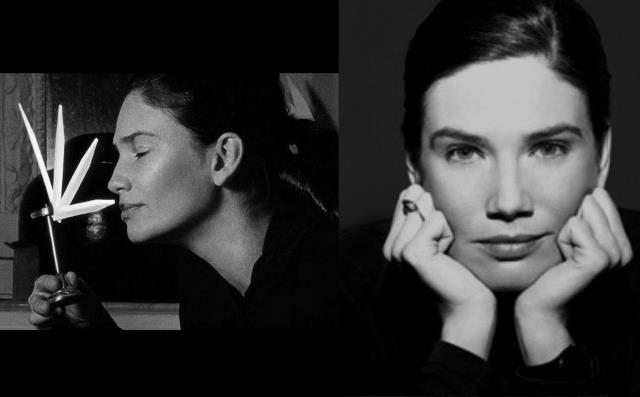
Olivia Giacobetti collage photos via wiki and CaFleureBon
It has become commonplace for precocious talent to find their own way. In the current time there are so many opportunities to find an audience. Twenty-five years ago, it was less common. Transparent styles of perfume have become commonplace. Especially as part of the current emerging trend to appeal to younger fragrance consumers. Twenty-five years ago, transparency in perfume was seen as a flaw. There is a perfumer who has blazed her own path by embracing transparent perfumes which are her signature; Olivia Giacobetti.
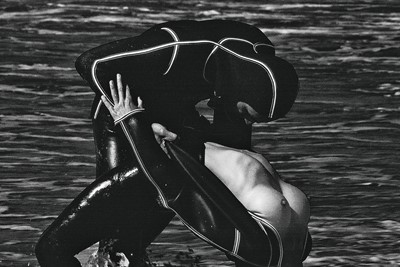
Photo by Francis Giacobetti (courtesy of anothermagazine)
Olivia Giacobetti would become inspired to become a perfumer when she saw the 1975 movie “Le Sauvage” at the age of nine. Her father was photographer Francis Giacobetti. He was known for his nudes where light and shadow were used for effect. He would say, “I am first of all a lighting technician. Lighting can be done with very simple elements, and not necessarily with a lot of equipment.” If you were to replace “lighting” in that quote with “perfume” you would come very close to a description of the way his daughter approached her compositions.
With these inspirations Mme Giacobetti began working for Annick Goutal in 1982. During that time Mme Goutal was working on Eau de Camille. Mme Giacobetti’s introduction to perfume composition would be a perfume where the green elements of ivy and grass would take precedence over the floral. The honeysuckle would lilt across the entire composition maintaining a presence without shouting.
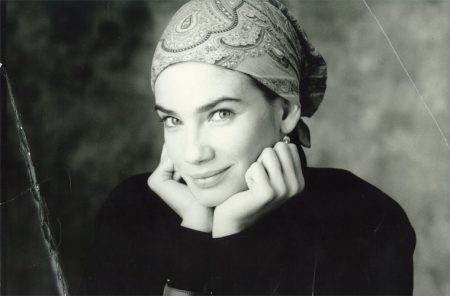
A year later she would join Robertet as an assistant perfumer. Over the next seven years she would absorb all the knowledge she could. Then in what was an unheard-of move, at the time, she struck out on her own forming her fragrance company; Iskia. This was not the usual path for any perfumer working at any of the big fragrance and flavor houses.
Using the same determination which found her running her own company she would get her first brief from L’Artisan Parfumeur for L’Eau de Artisan early in 1993. L’Artisan Parfumeur was one of the original niche perfume houses before the name existed in the vernacular. What that meant, especially in those early days, was this was a brand which would allow their perfumers more latitude to do something different. Olivia Giacobetti would take the opportunity to create a perfume where the other ingredients would be the focal point while the floral was used as a lighter contrast. In this case it was herbal notes on top and oakmoss and hay in the base. Through the middle part jasmine provided a floral veil. This would begin the most prolific partnership in her career as she would go on to make twenty perfumes for L’Artisan from 1993-2007. It is during this time that her signature of transparency would solidify. While working for L’Artisan she would also make perfume for Diptyque, another early niche brand. You could see the process happening over a few releases.
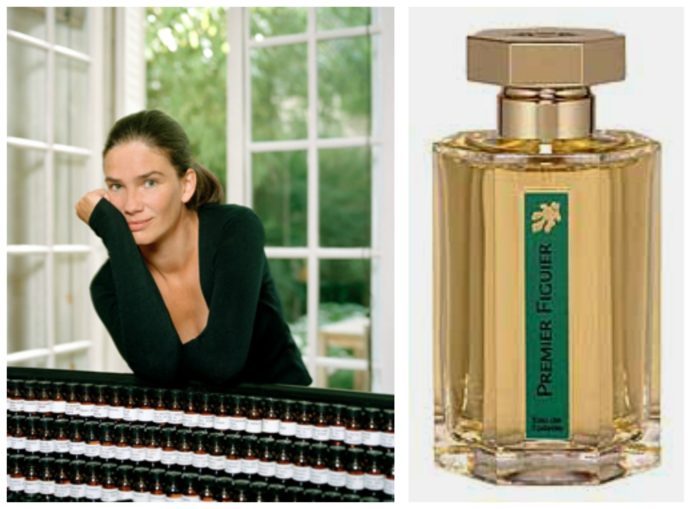
Collage of Olivia Giacobetti and L’Artisan Premier Figuier by Michelyn
The best example of this is the difference between 1994’s L’Artisan Premier Figuier and 1996’s Diptyque Philosykos (Mark’s review for CaFleureBon). In Premier Figuier Olivia Giacobetti used the ripe qualities of the fig as her focal point which provided a weightier style.
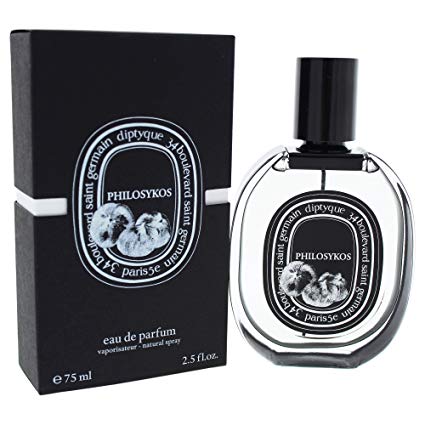
photo courtesy of Diptyque
Two years later she would focus on the greener aspects of fig using very precise amounts of ingredients like galbanum, in the way her father used light, to create a specific effect. It is in Philosykos where the brilliance of Mme Giacobetti’s transparency is first realized.
Other pairs which show the same evolution are L’Artisan Drole de Rose which would do the same with rose leading to the spicy version in Diptyque Opone. Her first attempt at a tea fragrance in L’Artisan The Pour un Ete would evolve into one of her best; L’Artisan Tea for Two. At this point in time, 1999, if one was to ask anyone who Olivia Giacobetti was, they would have been met with blank looks. One perfume and one creative director would change all that one year later.
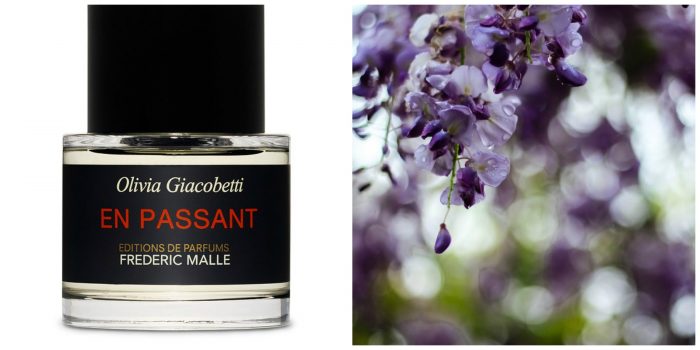
En Passant courtesy of Frederic Malle and lilacs via unsplash
Frederic Malle would create the first niche perfume line which treated the perfumer as an artist putting their name on the label. With the release of Editions de Parfums Frederic Malle he was creating a new environment where the creative minds behind the perfume would no longer be ghosts. Mme Giacobetti would create what is widely considered to be her best perfume for this; En Passant. En Passant is meant to capture the smell of lilac after a spring rain shower. She uses cucumber to provide the watery green nuance enhanced with orange leaves. This time the floral and the green are kept at the same opacity. To capture the wet soil an innovative accord of wheat and white musks come together to complete the desired milieu. It is one of the greatest perfumes of the last fifty years.
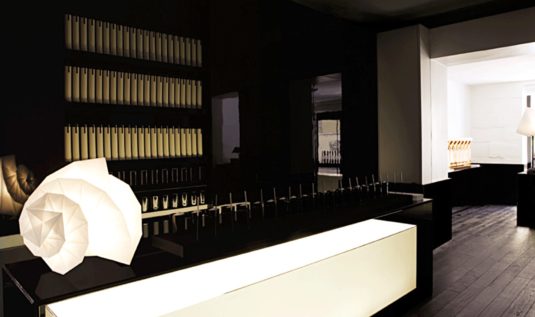
Photo courtesy of IUNX
Three years after En Passant, Olivia Giacobetti would form her own perfume brand IUNX. Selling from a single storefront in Paris she has continued to innovate on her signature style. IUNX L’Arbre stands out from this line for creating a sandalwood perfume which is near perfect in its ability to lighten up this traditionally heavy note.
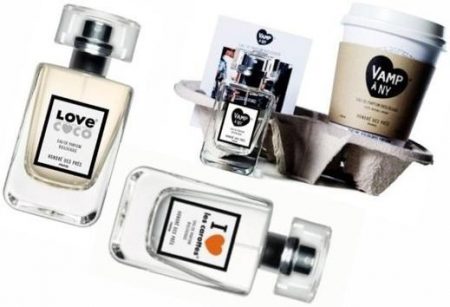
Honore des Pres We Love NY Collection courtesy of Honore des Pres
She would also innovate again when she would work with an all-natural palette for the French brand Honore des Pres. Picking up on the evolutionary theme presented above you can compare 2000’s L’Artisan Fleure de Carotte with 2010’s Honore de Pres We Love NY: I Love Les Carottes For anyone who harbors doubts about the versatility of an all-natural palette the perfumes Mme Giacobetti produced for Honore des Pres are as good as any of her mixed-media creations.
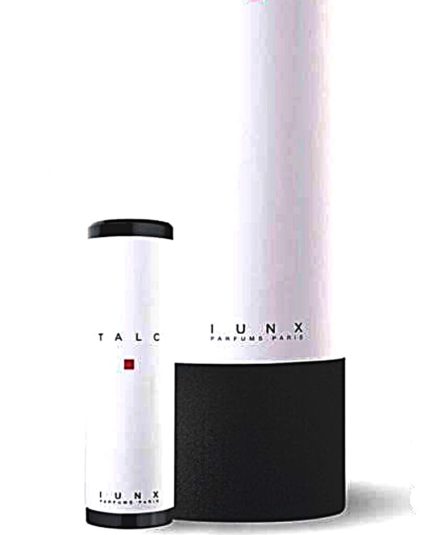
Talc de IUNX courtesy of IUNX (2019)
As trends have caught up to her she has proven this year, with the releases of Talc de IUNX and NARS Audacious, to still be ahead of the curve.
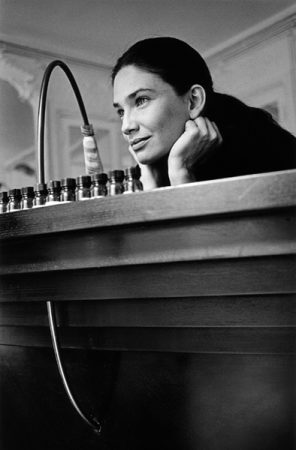
via WWD
Precocious perfume talent working on transparent constructions might be everywhere today. Olivia Giacobetti provided a trail for them to follow.
–Mark Behnke, Guest Contributor and Art Direction by Michelyn Camen, Editor-in-Chief
